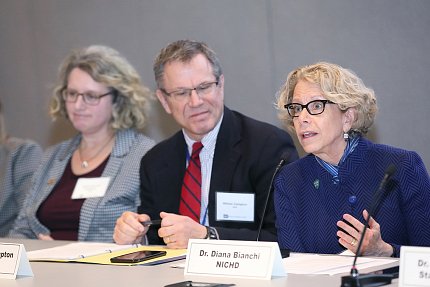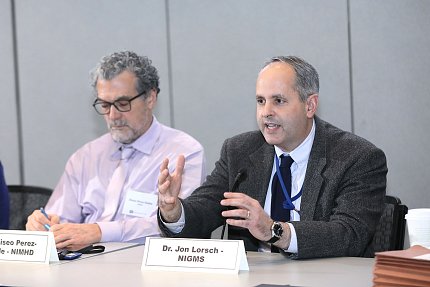NIH Holds Inaugural Seminar on American Rural Health

Photo: Chia-Chi Charlie Chang
One in 5 Americans live in rural America and face health disparities every day due to higher rates of poverty and less access to health care. They are likelier to die from chronic diseases and have experienced a dramatic rise in opioid addiction and suicide deaths over the past decade. Recently, NIH hosted the inaugural rural health seminar in an effort to focus attention on health disparities prevalent in rural communities. It brought together researchers, scientists, medical practitioners and others to explore ideas and innovations for rural health improvement.
In opening remarks, NCATS director Dr. Christopher Austin recollected the dearth of health care facilities in vast stretches of Alaska, where he served as a physician. “Rural Americans face health disparities that are rooted in racial, economic and geographic health workforce issues,” he said. “They experience higher rates of poverty and lack of health care access and are likelier than their urban counterparts to die from heart disease, cancer, chronic lower respiratory disease, stroke, addiction, suicide and substance overdose.”

Photo: Chia-Chi Charlie Chang
“Income is a critical predictor of life expectancy,” said NIMHD director Dr. Eliseo Pérez-Stable. Health outcomes among people in rural areas must be evaluated by race, ethnicity and socioeconomic status as well as geographic setting, he suggested. Race/ethnicity of rural residents differs by region with variations in community cohesion and resilience that promote better health.
Data from various studies show that rural populations are older than urban populations, have fewer years of education, shorter life expectancy and access to fewer physicians and hospitals, he continued. Structural determinants of health that affect rural areas include limits on: transportation, broadband internet access, mobile phone services and access to healthy food options, Pérez-Stable noted.
NHLBI director Dr. Gary Gibbons emphasized the importance of hearing out problems of the rural community, appreciating their heterogeneity and acknowledging that the rural community will eventually be drivers of their local solutions. “In America’s breadbasket, you have situations of food deserts,” he said of the large distances to grocery stores in rural midwestern and southern states. He suggested data science implementation to inform interventions tailored for specific rural communities, where one size doesn’t fit all.
Guest speaker Dr. Gene Brody, Regents professor of child and family development and founder and director of the Center for Family Research at the University of Georgia, found that there is a deficit in scientific knowledge about rural communities.

Photo: Chia-Chi Charlie Chang
“Poverty and economic distress are pervasive features of the 623 counties known as the ‘Black Belt’ that stretches from North Carolina into South Carolina, Georgia, Alabama, Mississippi and Louisiana,” he said. According to the “weathering hypothesis,” chronic stressors including poverty, racial discrimination and limited access to health care are the root of health disparities in rural African-American young adults that develop over their life course and possibly begin at conception.
Downward mobility of a community affects the people living it, added Brody. However, such effects are watered down when there is a high social and parental support factor. His research attempts to strengthen developmentally appropriate parenting practices for African-American rural youth. His work has shown that rural parents who participate in family-centered drug prevention programs manage their parenting requirements better, raising kids with decreased stress levels.
Discussing the theory of “skin-deep resilience,” Brody pointed out that “there might be a cost of resilience; people could have a single-minded determination to succeed and psychosocially be doing great, but the cost of working diligently, letting your health go by the wayside, may undermine your health.” Upward mobility of rural African-American children was associated with diabetes and asthma, unlike their white counterparts.

Photo: Chia-Chi Charlie Chang
In the panel discussion, Dr. Melissa Walls, director of the Great Lakes Hub for the Johns Hopkins Center for American Indian Health, addressed the resilience, a coping mechanism, seen in rural tribal communities. Dr. Stacey Arnesen of NLM advised providing health information access to rural communities in a format they can use. Dr. Wilson Compton, deputy director of NIDA, stressed attention to the drug abuse that exists in rural areas, often overlooked as solely an urban problem. NIGMS director Dr. Jon Lorsch talked about the IDeA program that funds research and infrastructure development in states that have historically received less NIH support and are home to a predominantly rural population. A more nurturing environment for diverse trainees at NIH was suggested by NIMH Office of Disparities director Dr. Andrea Beckel-Mitchener. And NICHD director Dr. Diana Bianchi talked about promoting rural health initiatives in social media, enabling greater awareness of these issues.
